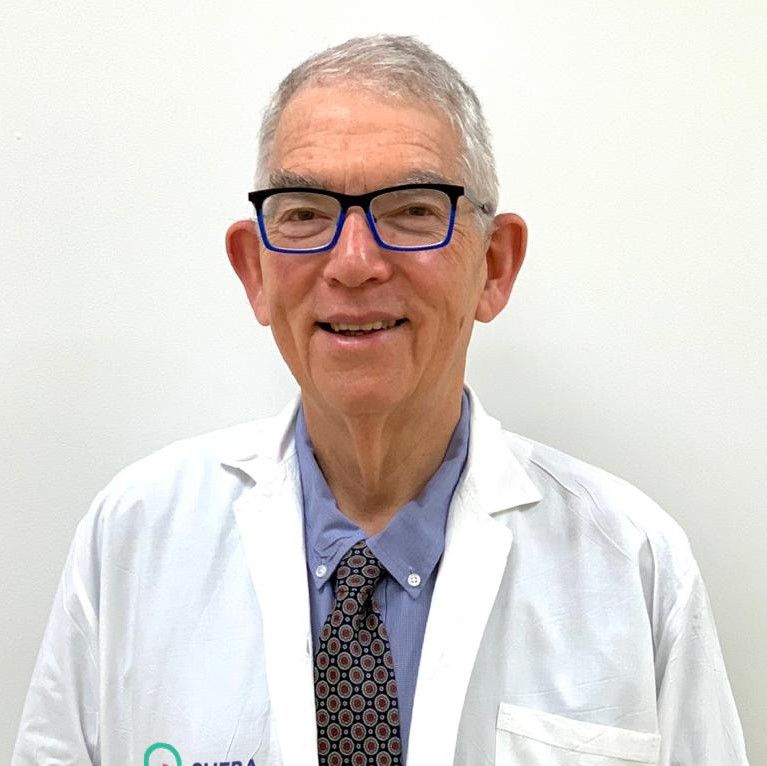Matched Sibling Donor Transplant Improves 2-Year Overall Survival in R/R ALL
Retrospective data signal that transplant with a matched sibling donor may prolong survival over haploidentical stem cell transplant in patients with relapsed or refractory acute myeloid leukemia.
Arnon Nagler, MD, MSc

In comparison with patients with relapsed/refractory acute lymphoblastic leukemia (ALL) who underwent haploidentical stem cell transplant, those who underwent matched sibling donor (MSD) transplants had a significantly higher overall survival (OS) at the 2-year mark, according to retrospective findings that were presented during the 2022 Transplantation & Cellular Therapy Meetings.
Result showed that, at a median follow-up of 32 months, the 2-year OS rate was 38% in patients who underwent MSD transplant compared with 22% in those who had haploSCT (P = .001). Moreover, leukemia-free survival was 31% in the MSD-transplant arm vs 18% in the haploSCT group (P = .023), and graft-vs-host disease (GVHD)–free relapse-free survival rates were 19% vs 16%, respectively (P = .06).
“Two-year OS of relapsed/refractory patients with ALL undergoing MSD transplants is significantly better than in haploSCT with a higher [non-relapse mortality rate] with the latter,” lead study author Arnon Nagler, MD, MSc, president of the Hemato-Oncology Center, and director of Bone Marrow Transplantation and Cord Blood Bank, at Sheba Medical Center, and coinvestigators, wrote in a poster presentation. “The emerging humoral and cellular immunotherapies for ALL may enable reduction of the high posttransplantation relapse rates.”
Although previous data have demonstrated similar outcomes between MSD transplants and haploSCT for patients with ALL who are in remission, it is unclear if the same holds true for a relapsed/refractory population.
In the retrospective analysis, conducted by the Acute Leukemia Working Party of the European Society for Blood and Marrow Transplantation, investigators evaluated 274 adult patients with relapsed/refractory ALL who underwent transplant, either through MSD or haploSCT, between 2012 and 2020. A multivariate analysis also adjusted for differences between groups through a Cox proportional hazards regression model.
Thirty-four percent (n = 94) of patients underwent haploSCT and 66% (n = 180) had MSD transplants. The median age was 33 years (range, 18-76) for those on the haploSCT group and 37 years (range, 18-76) on the MSD group. More patients in the MSD group were in primary refractory phrase (55.0%) than those in the haploSCT group (31.9%). However, more patients who underwent haploSCT were in their second relapse at 33% vs 11.1% who underwent MSD (P <.0001).
Moreover, 53.3% of patients had T-cell ALL, 25.5% had Philadelphia chromosome–negative disease, and 21.2% had Philadelphia chromosome–positive disease; these rates were similar between groups.
Additionally, the Karnofsky performance score was at least 90% in 59.8% and 64.7% of patients on the haploSCT and MSD-transplant arms, respectively (P <.43), and myeloablative conditioning regimens were given to 67% vs 84% of patients, respectively (P <.001). TBI was given to 32% vs 68% of patients, respectively (P <.0001). The use of bone marrow grafts was more common in those who underwent haploSCT (44%) compared with those who underwent MSD transplant (10%; P <.0001).
Engraftment rates were 87% in the haploSCT arm and 96% in the MSD-transplant arm (P = .005).
Further findings showed that acute GVHD that was stage II to IV did not significantly differ between the 2 arms, at 28% with haploSCT and 21% with MSD transplant, respectively (P = .25). Grade 3/4 GVHD occurred in 18% and 9% of patients, respectively (P = .042). Chronic GVHD rates were 17% and 33% in haploSCT and MSD-transplant arms, respectively (P = .012), and extensive cGVHD rates were 5% and 17%, respectively (P = .011).
The complete response (CR) rate was 64% in patients who underwent MSD transplant compared with 69% in those who had haploSCT. Relapse at 2 years occurred in 57% of those in the haploSCT group vs 52% in the MSD transplant group; non-relapse mortality (NRM) occurred in 25% vs 18% of patients, respectively.
When examined via multivariate analysis, NRM was higher with haploSCT than MSD transplant (HR, 2.03; 95% CI, 1.03-4.02; P = .042), which also was linked with worse OS with haploSCT (HR, 1.72; 95% CI, 1.15-2.58; P <.009).
Moreover, the multivariate analysis showed no difference between arms with regard to relapse (HR, 0.97; 95% CI, 0.62-1.52; P = .89), LFS (HR, 1.22; 95% CI, 0.84-1.78; P = .3), and GRFS (HR, 1.31; 95% CI, 0.88-1.94; P = .18). Non-significant differences in acute and chronic GVHD were observed between the 2 arms, as well.
Deaths in the haploSCT and MSD-transplant arms were caused by leukemia (64% vs 63%, respectively), infection (16% vs 18%), and GVHD (13% vs 11%).
Reference
Nagler A, Labopin M, Arat M, et al. Allogeneic stem cell transplantation from haploidentical versus matched sibling donors for adult patients with relapsed/refractory acute lymphoblastic leukemia: a study from the Acute Leukemia Working Party of the European Society for Blood and Marrow Transplantation. Presented at: 2022 Transplantation & Cellular Therapy Meetings of ASTCT and CIBMTR; April 23-26, 2022; Salt Lake City, UT. Abstract 152.








